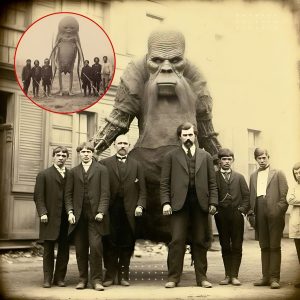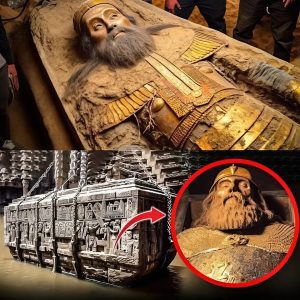Deep beneath the tranquil surface of the Pacific Ocean lies an eerie and breathtaking spectacle—a graveyard of aircraft, resting silently on the ocean floor. This underwater realm, known as the “Airplane Cemetery,” is a haunting reminder of aviation’s golden age, filled with forgotten stories of American planes that now serve as both historical artifacts and a window into a bygone era of war, innovation, and adventure.
A Hidden World Beneath the Waves
Located off the coast of the Marshall Islands in the Pacific, this airplane cemetery is a final resting place for numerous World War II-era aircraft. These planes, many of them once flying through the skies during fierce battles, now sit eerily preserved in the cold embrace of the ocean. Divers and underwater explorers who have ventured into this surreal landscape describe it as both haunting and awe-inspiring—a place where time stands still, and history comes alive.
Among the sunken aircraft are legendary planes like the Grumman F6F Hellcat and the Douglas SBD Dauntless, machines that played crucial roles in securing American victory during World War II. These planes, once symbols of power and innovation, now lie forgotten, encrusted with coral and inhabited by colorful marine life, creating an extraordinary underwater museum.

The Stories of War and Heroism
Each plane that rests in the airplane cemetery carries with it untold stories of bravery, loss, and triumph. Many of these aircraft were shot down during intense battles between American and Japanese forces in the Pacific Theater. For the pilots who manned these planes, the stakes couldn’t have been higher—fighting to defend their country and secure victory for the Allies.
One such story is that of a fighter pilot named Lieutenant Jack Thomas, whose Hellcat was hit during a dogfight with Japanese Zeros. Despite the damage to his plane, Lieutenant Thomas managed to land his Hellcat in the ocean, where it sank beneath the waves. He was rescued by a passing American ship, but his aircraft now remains a ghostly reminder of the sacrifices made by those who fought in the skies.
Similarly, some planes met their fate due to mechanical failures or bad weather, forcing their crews to ditch into the ocean. The vast Pacific became both a battlefield and a graveyard for hundreds of planes, their stories left to be discovered decades later.
The Rise of Underwater Exploration
While these aircraft have been hidden for more than 70 years, modern technology has made it possible to uncover their secrets. Advances in underwater exploration, including sonar mapping and remote-operated vehicles (ROVs), have allowed divers to locate and document the precise locations of these sunken planes. In recent years, expeditions led by both historians and diving enthusiasts have mapped out the airplane cemetery, bringing these forgotten giants back into the public eye.
Underwater archaeologists are now working to piece together the final moments of these aircraft. The cold waters of the Pacific have preserved many planes in surprisingly good condition, allowing for an unprecedented look into the technology and craftsmanship of the time. From still-visible insignia on the fuselages to the remains of engines that powered these planes through combat, the wrecks offer a unique glimpse into the past.
An Underwater Museum of Aviation History
What makes this airplane cemetery truly remarkable is the way nature has transformed these wrecks into living reefs. Coral has slowly covered the planes over the decades, turning them into vibrant underwater ecosystems teeming with life. Fish swim through the hollow cockpits and wings of the aircraft, while turtles and other sea creatures take shelter among the remnants of these mechanical giants.
For divers, visiting the airplane cemetery is a profound experience. The combination of history, nature, and mystery creates an unforgettable atmosphere. It’s a place where the past meets the present—where machines of war have become sanctuaries for marine life, and the wreckage of the past offers new hope for the future of ocean ecosystems.
Preserving History for Future Generations
As more and more divers and explorers visit this unique underwater site, efforts are being made to preserve the airplane cemetery for future generations. Conservationists and historians alike are working to protect the planes from deterioration and ensure that their stories are not lost to time. These wrecks serve not only as historical artifacts but also as reminders of the human cost of war and the ingenuity that defined America’s aviation industry.
There are ongoing debates about how best to preserve these underwater treasures. Some advocate for the planes to remain exactly where they are, untouched by human hands, allowing nature to reclaim them fully. Others argue that some planes should be raised from the depths and restored to their former glory, so they can be displayed in museums for the world to see.
Regardless of what the future holds for these aircraft, the airplane cemetery will continue to capture the imagination of those who seek to understand the past. The combination of history, adventure, and mystery makes it one of the most fascinating underwater sites in the world.
A Final Resting Place for America’s Aviation Giants
The airplane cemetery beneath the ocean is more than just a graveyard—it’s a testament to the resilience of both nature and humanity. As these planes sit quietly on the ocean floor, their rusting frames tell stories of courage, sacrifice, and innovation. For those who venture into this hidden world, the experience is nothing short of extraordinary—a journey into the depths of history, where the past and present collide in a most spectacular way.





